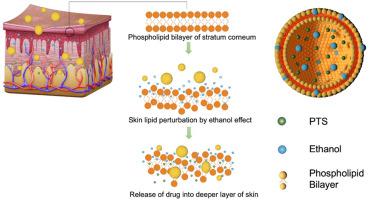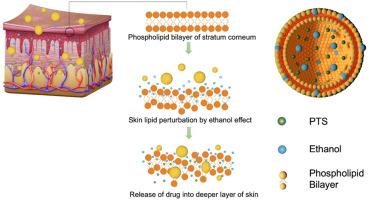三七人参皂苷的美白活性研究及剂型优化
IF 6.8
2区 医学
Q1 CHEMISTRY, MEDICINAL
引用次数: 0
摘要
背景人参皂苷作为中药中的一种有效成分,多年来一直被广泛用于美白皮肤。最近的研究发现,与人参相比,三七的人参皂苷含量更高。我们选择了从三七中分离出的五种达玛烷人参皂苷及其混合物来研究它们的皮肤闪电活性。采用斑马鱼胚胎模型对美白活性进行初步筛选。随后,通过测试这些成分对 B16 细胞中黑色素和酪氨酸酶活性的抑制作用来检验和比较这些成分的美白效果。分子对接也被用于研究人参皂苷与酪氨酸酶之间的相互作用。实验结果表明,原人参三醇皂苷(PTS)是最有效的皂苷,且安全性良好,分子对接结果表明,PTS对酪氨酸酶有很强的抑制能力。PTS 被成功封装到乙素体中,封装效率高达 93%。结论 PTS 乙硫体凝胶提供了一种有效、安全的 PTS 制剂,可在体内美白被 UVB 晒黑的皮肤,未来可用作一种潜在的皮肤美白剂。本文章由计算机程序翻译,如有差异,请以英文原文为准。


Investigation of the whitening activity of ginsenosides from Panax notoginseng and optimization of the dosage form
Background
Ginsenoside, as an active ingredient in traditional Chinese medicine, has been widely used for skin whitening for several years. Recent research has found that Panax notoginseng has a higher content of ginsenosides compared with the Panax ginseng. Those ginsenosides have promising potential to be developed as skin whitening agents.
Methods
We selected five dammarane ginsenosides isolated from P. notoginseng and their mixtures to investigate the skin lightning activity. Zebrafish embryo model was used for initial screening of the whitening activity. Subsequently, the whitening effect of components was examined and compared via testing the inhibition of melanin and activity of tyrosinase in B16 cells treated with these components. Molecular docking was also applied to investigate the interactions between ginsenosides and tyrosinase. Finally, the most effective saponins were selected for dosage form optimization and the whitening effect of saponin-loaded ethosomes was further demonstrated on the C57BL/6 mouse model.
Results
Experimental results showed that the protopanaxtriol saponins (PTS) were the most potent saponins with a decent safety profile, and the molecule docking results demonstrated that PTS had strong inhibitory ability to tyrosinase. PTS was successfully encapsulated into ethosomes with an encapsulation efficiency of 93%. The PTS ethosome gel could effectively inhibit the melanin production caused by UVB tanning on the back skin of mice.
Conclusion
The PTS ethosome gel provides an effective and safe formulation of PTS to whiten the UVB-tanned skin in vivo and could be used as a potential skin whitening agent in the future.
求助全文
通过发布文献求助,成功后即可免费获取论文全文。
去求助
来源期刊

Journal of Ginseng Research
CHEMISTRY, MEDICINAL-INTEGRATIVE & COMPLEMENTARY MEDICINE
CiteScore
11.40
自引率
9.50%
发文量
111
审稿时长
6-12 weeks
期刊介绍:
Journal of Ginseng Research (JGR) is an official, open access journal of the Korean Society of Ginseng and is the only international journal publishing scholarly reports on ginseng research in the world. The journal is a bimonthly peer-reviewed publication featuring high-quality studies related to basic, pre-clinical, and clinical researches on ginseng to reflect recent progresses in ginseng research.
JGR publishes papers, either experimental or theoretical, that advance our understanding of ginseng science, including plant sciences, biology, chemistry, pharmacology, toxicology, pharmacokinetics, veterinary medicine, biochemistry, manufacture, and clinical study of ginseng since 1976. It also includes the new paradigm of integrative research, covering alternative medicinal approaches. Article types considered for publication include review articles, original research articles, and brief reports.
JGR helps researchers to understand mechanisms for traditional efficacy of ginseng and to put their clinical evidence together. It provides balanced information on basic science and clinical applications to researchers, manufacturers, practitioners, teachers, scholars, and medical doctors.
 求助内容:
求助内容: 应助结果提醒方式:
应助结果提醒方式:


